Black & White Manhattan City Skyline NYC Skyline Wall Art & Canvas Prints
Black & White Manhattan City Skyline NYC Skyline Wall Art & Canvas Prints
Couldn't load pickup availability
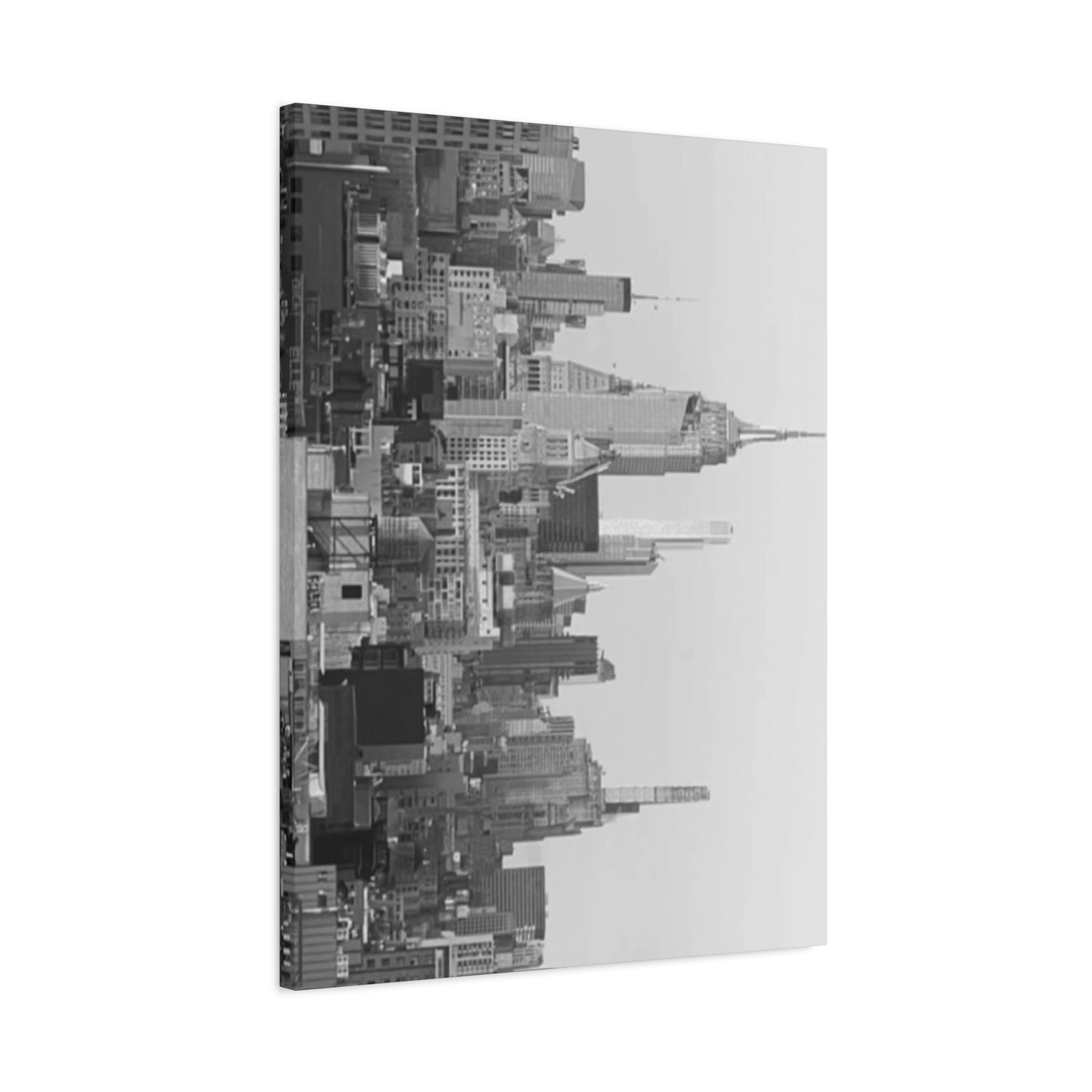
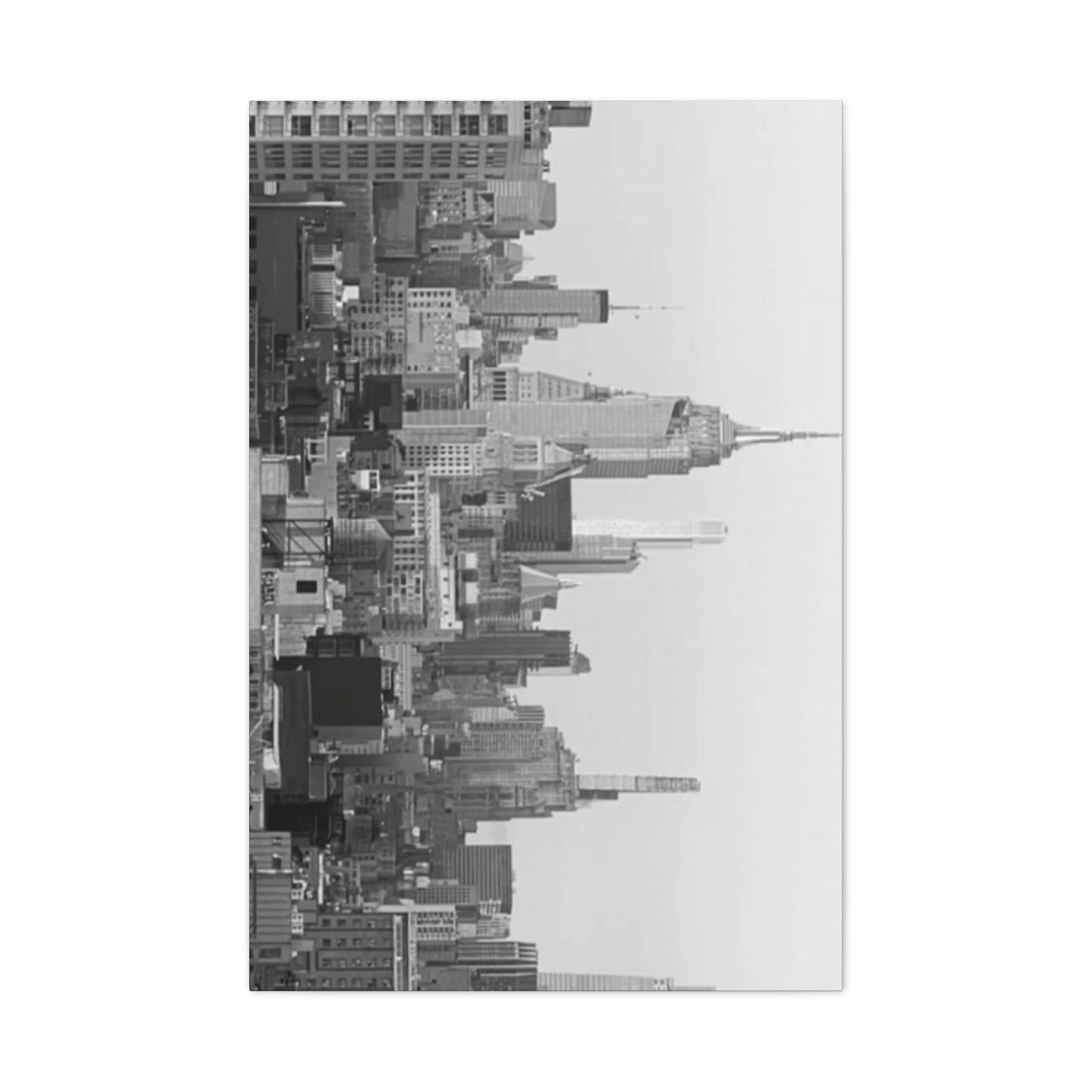
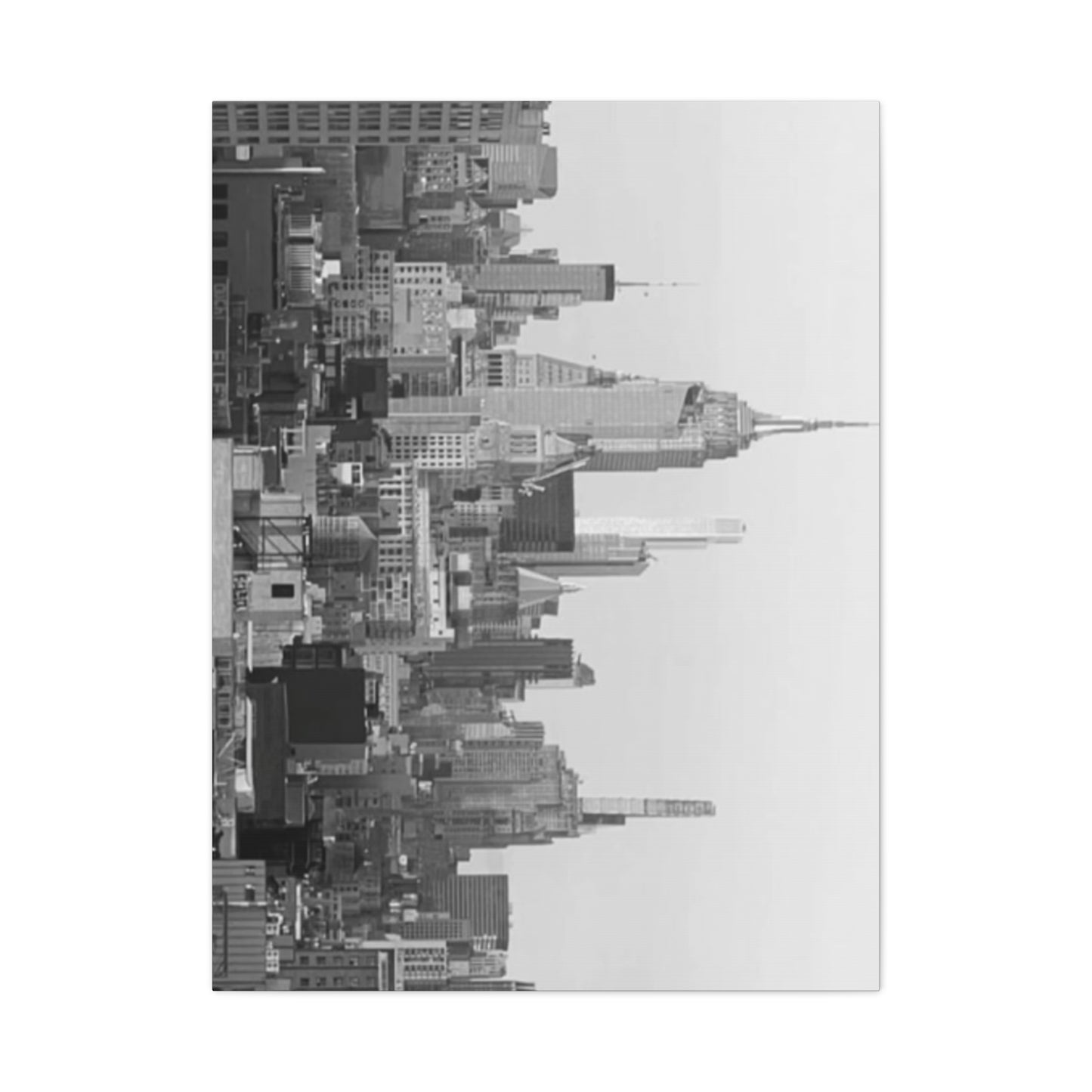

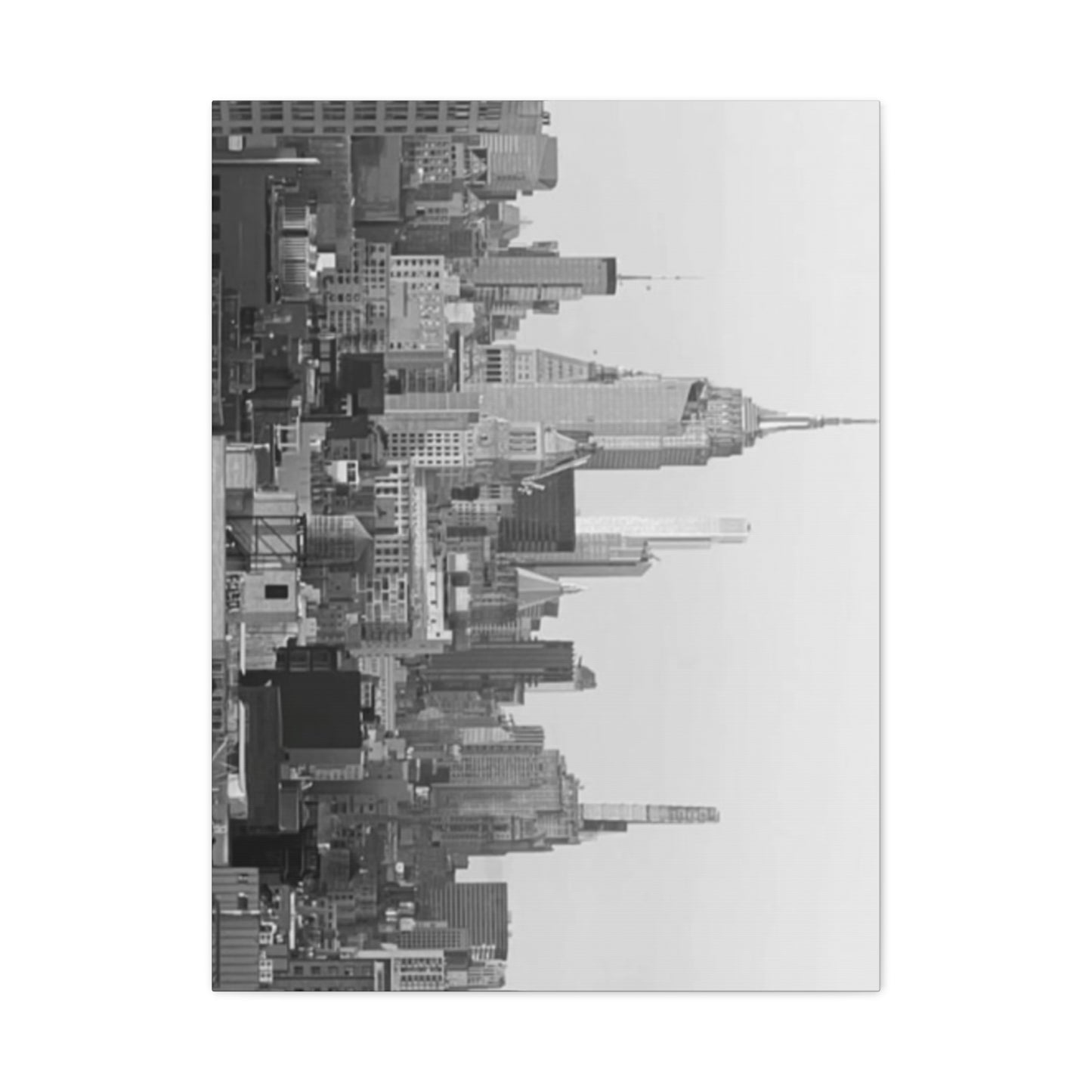
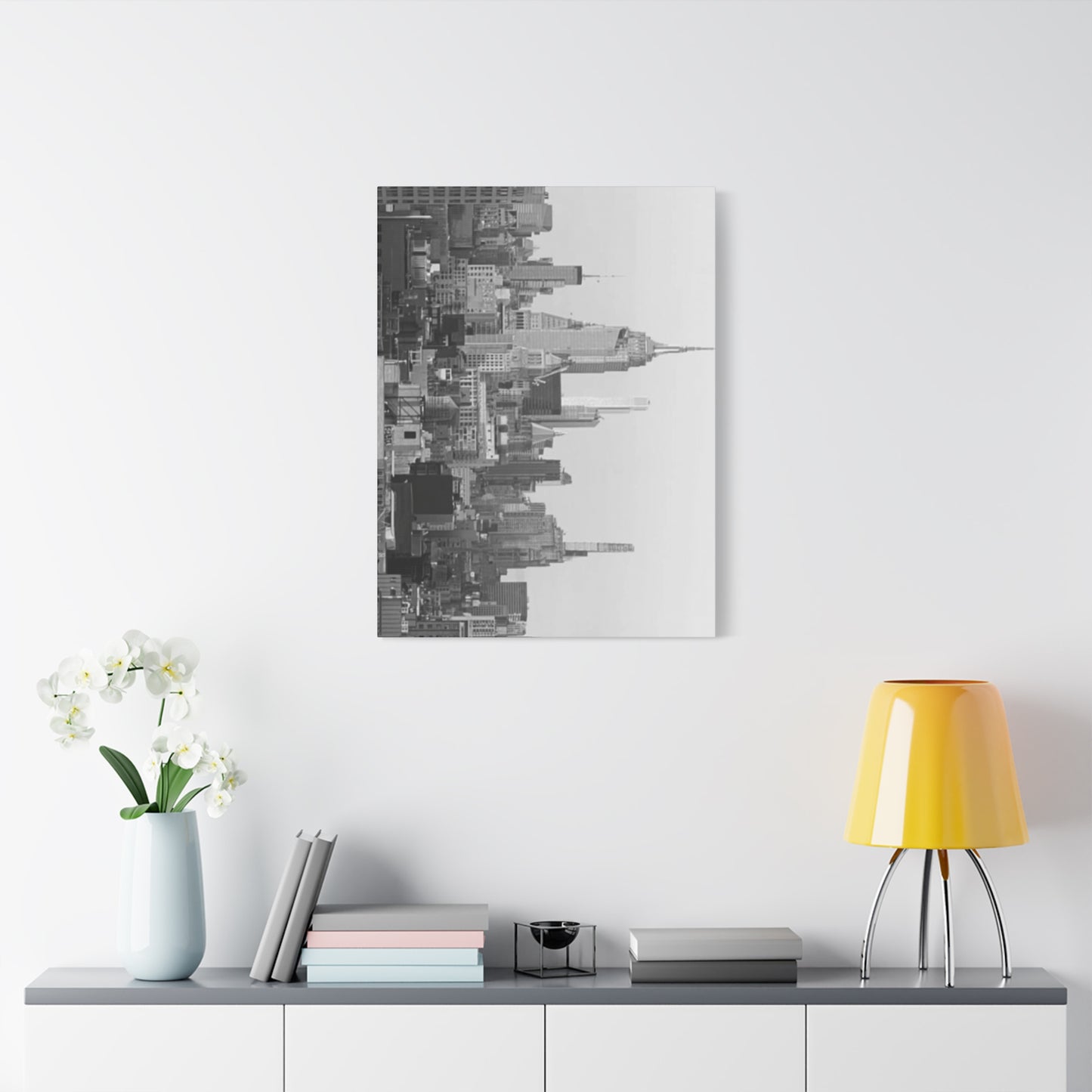
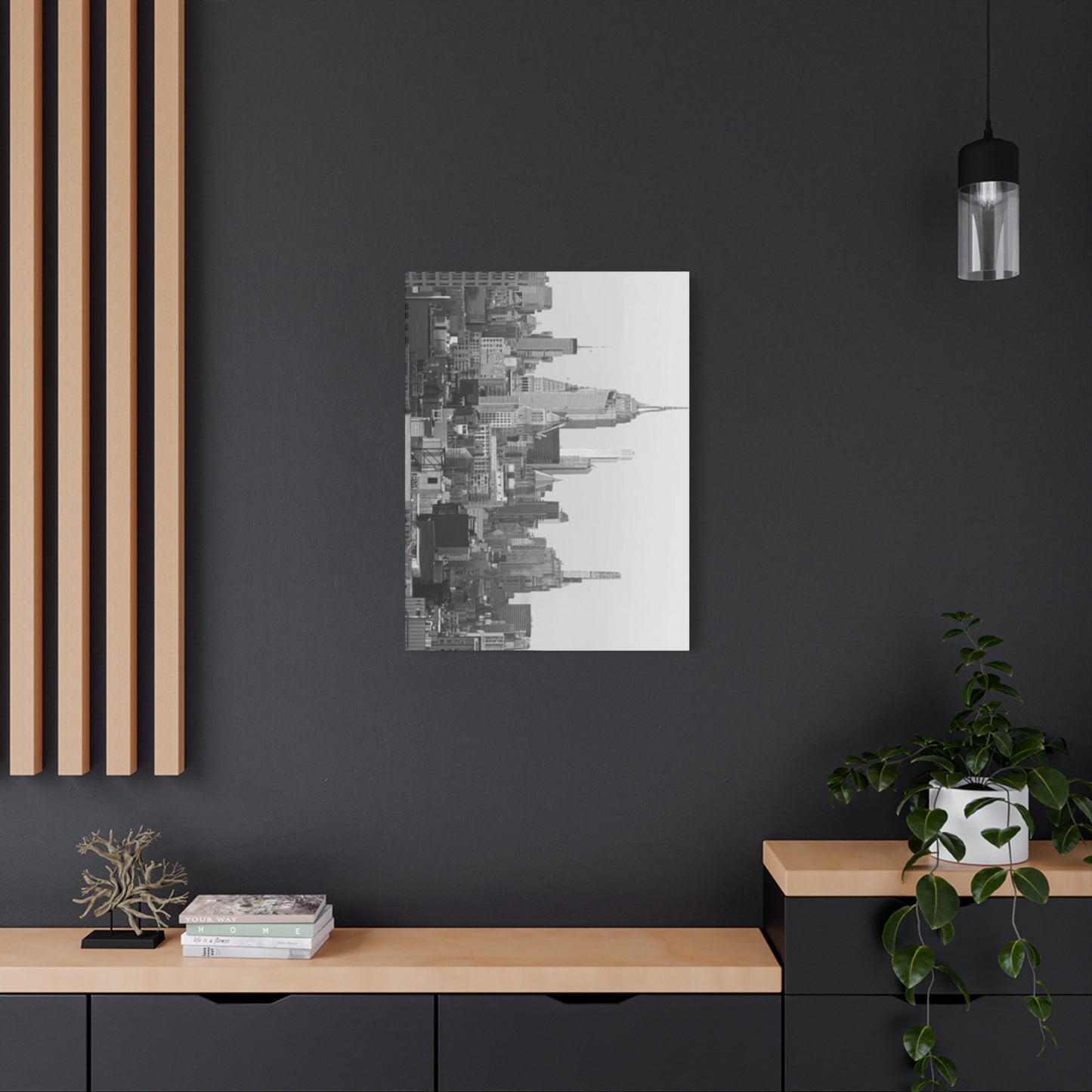
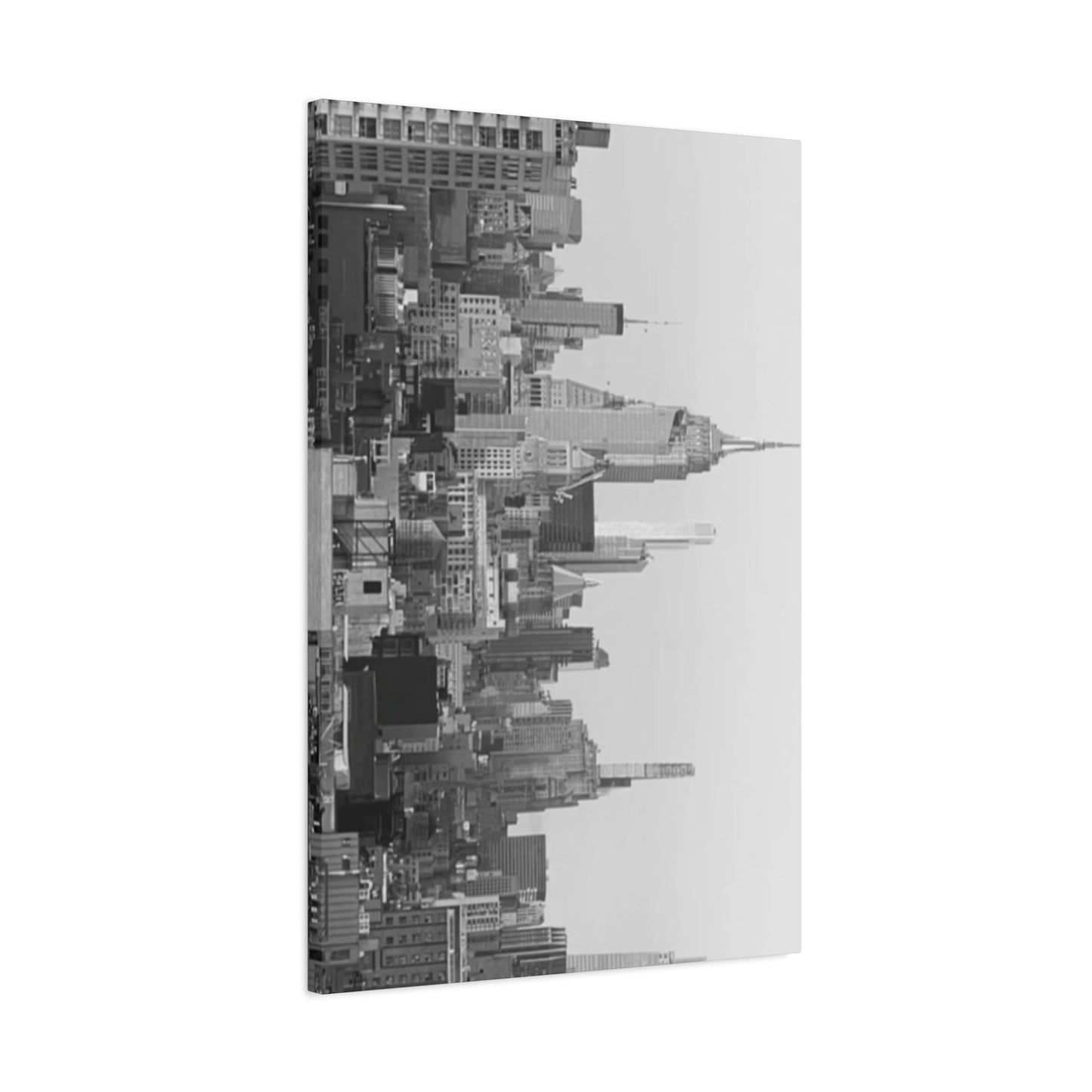
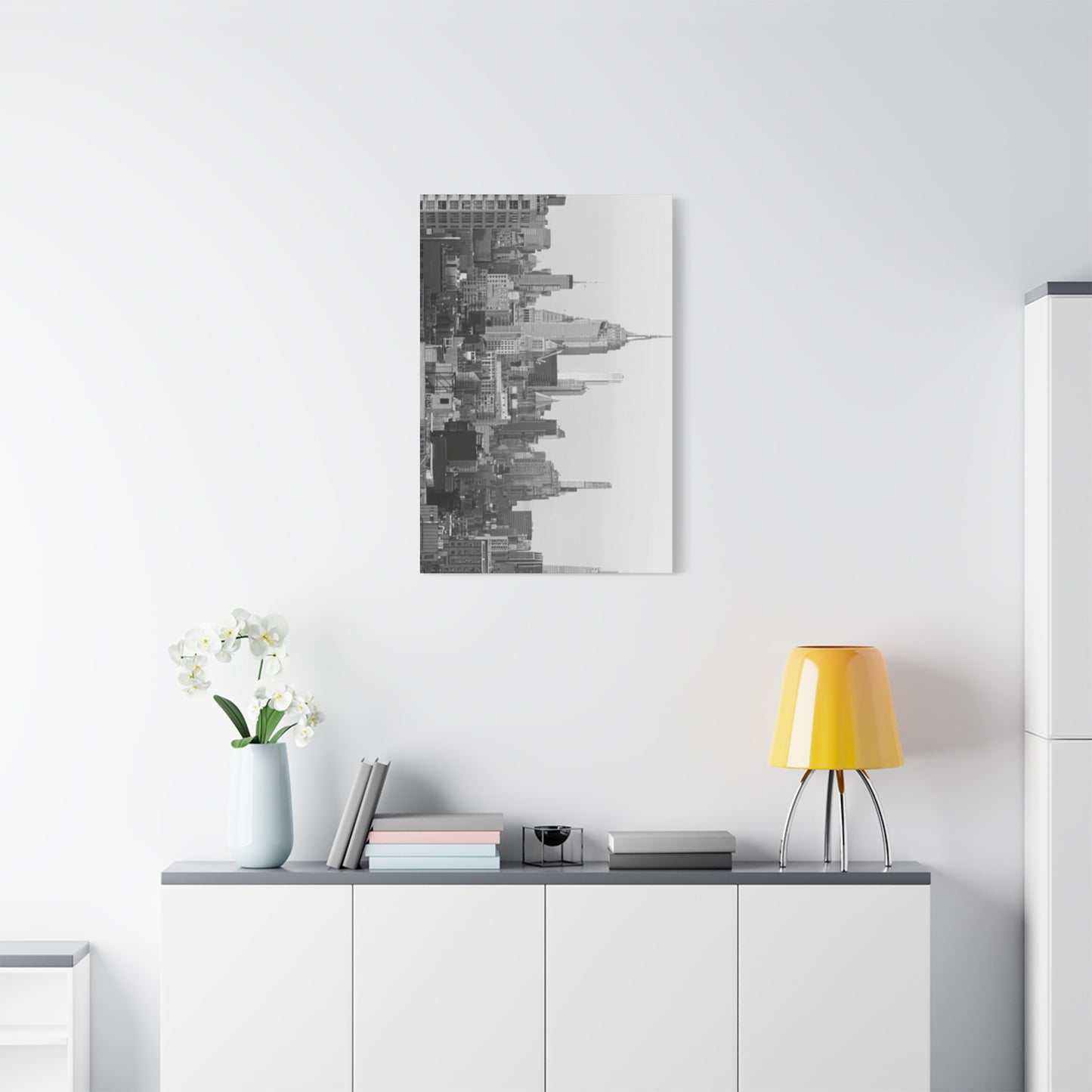
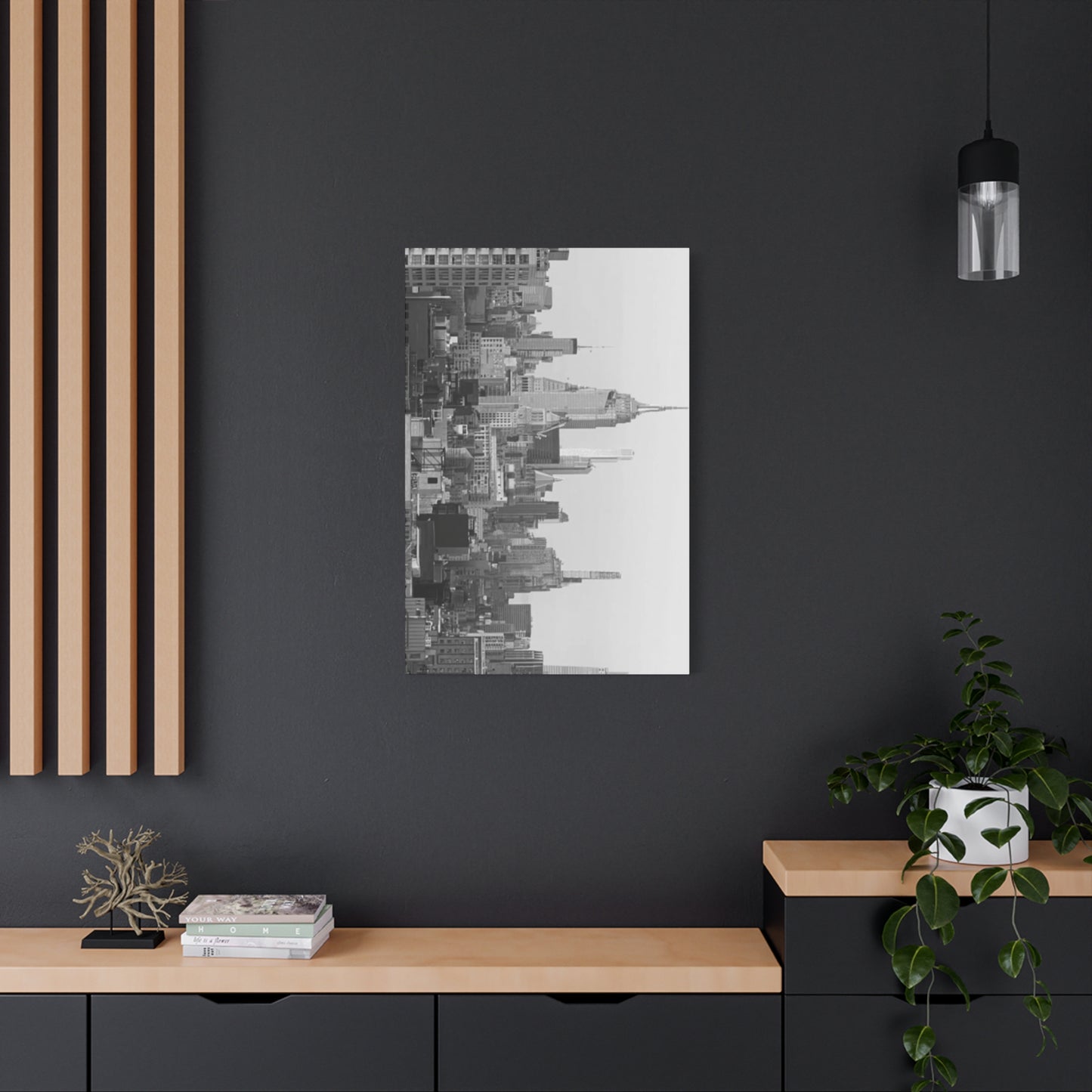

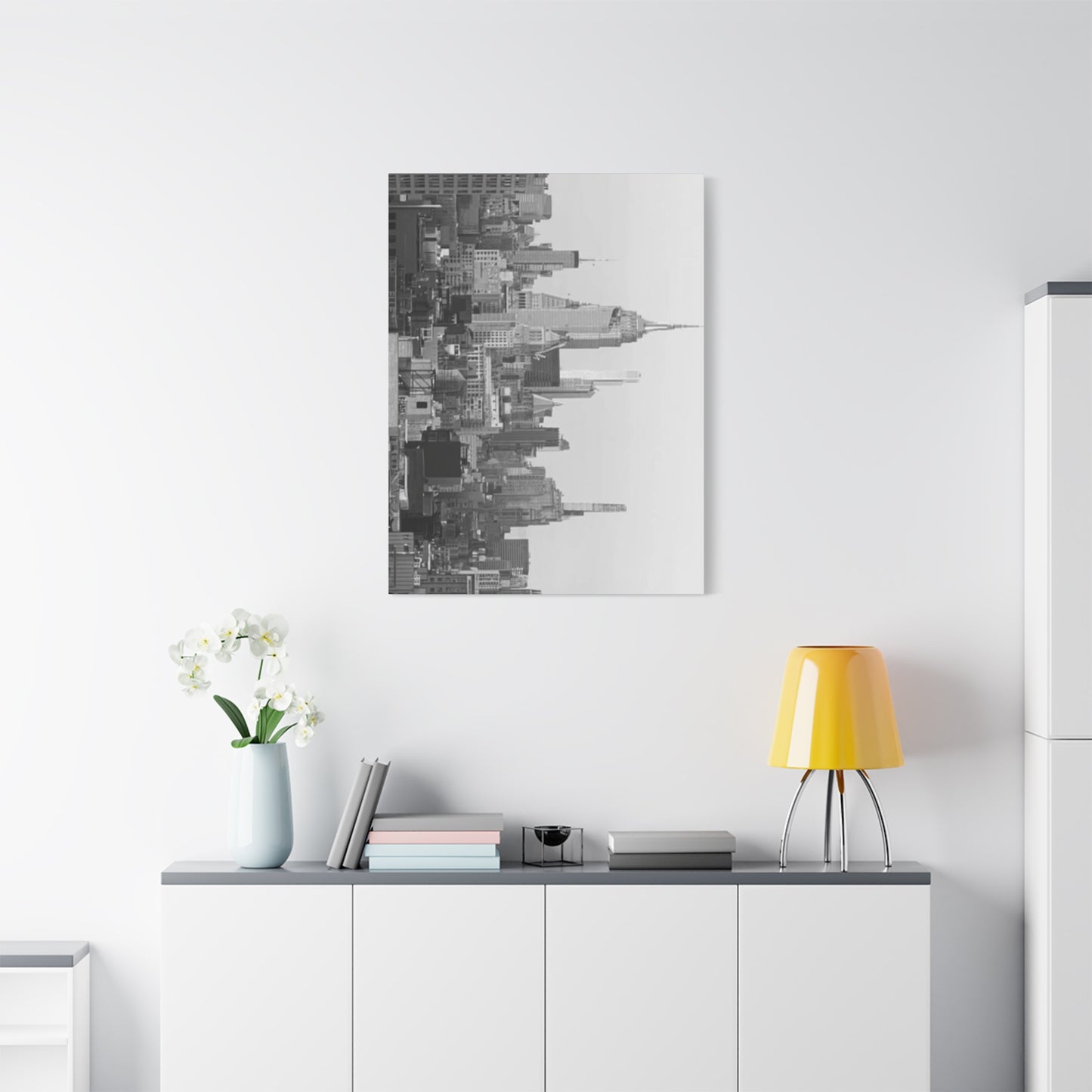

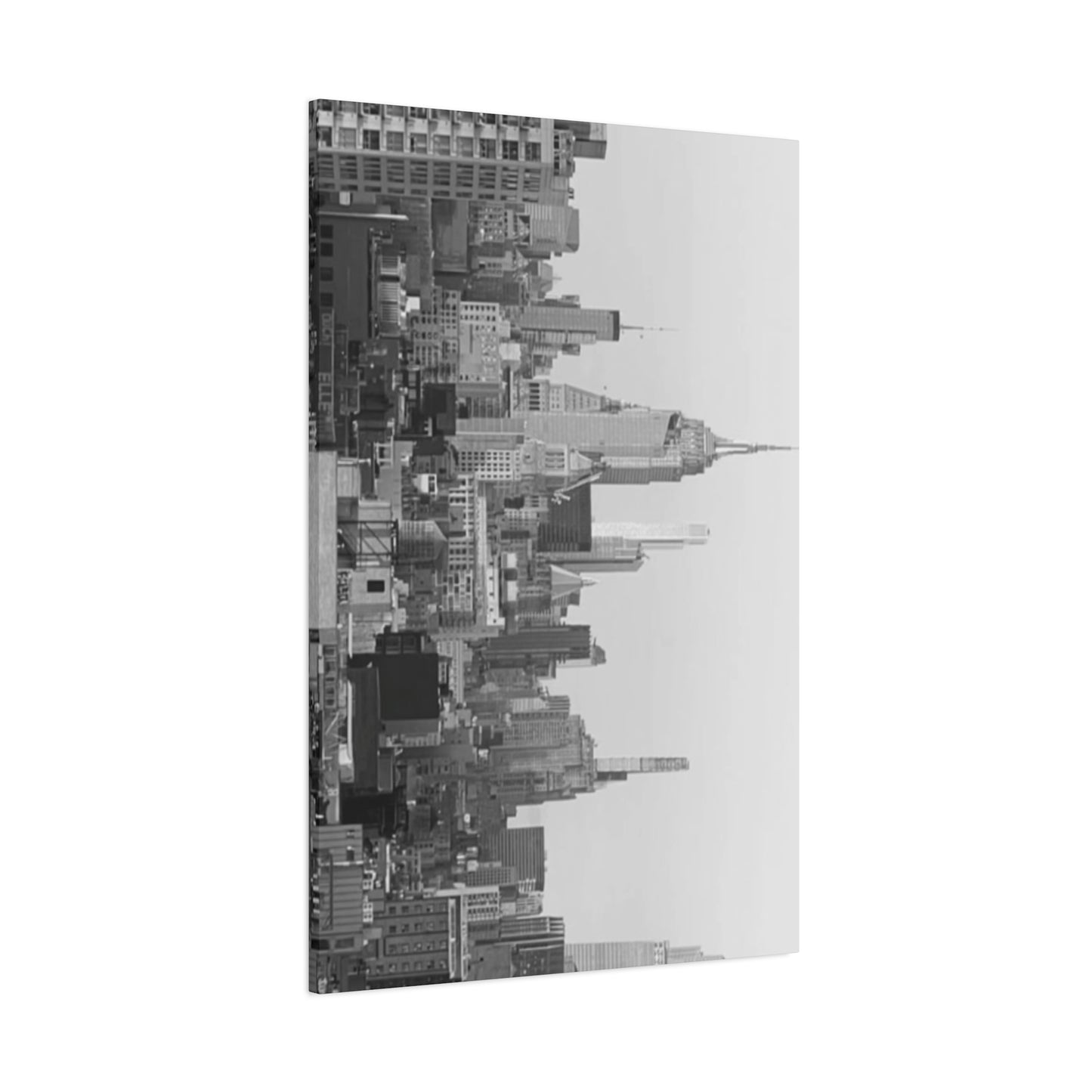

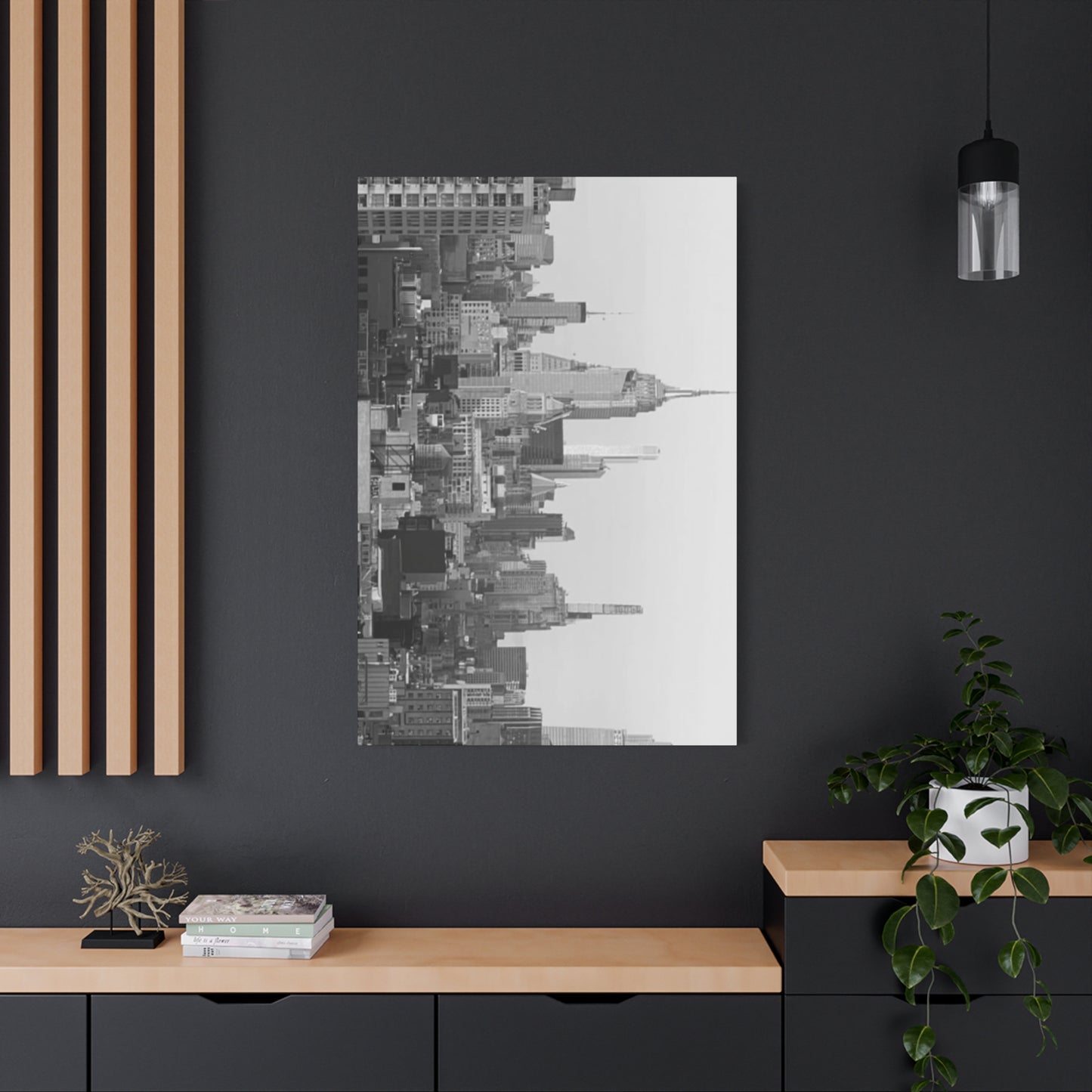
New York City Skyline Wall art: A Magnificent Urban Landscape That Captivates the World
The New York City skyline stands as one of the most recognizable and breathtaking urban vistas on Earth. This magnificent collection of architectural marvels stretches across Manhattan, creating a stunning silhouette that has captured the imagination of millions worldwide. From towering skyscrapers that pierce the clouds to historic buildings that tell the story of American progress, the NYC skyline represents the pinnacle of urban development and architectural achievement.
This iconic panorama has evolved over more than a century, transforming from a modest collection of low-rise buildings into the spectacular vertical cityscape we see today. Every angle offers a different perspective, whether viewed from the bustling streets below, the tranquil waters surrounding Manhattan, or elevated observation decks that provide bird's eye views of this urban masterpiece. The skyline serves not just as a backdrop for daily life but as a symbol of ambition, innovation, and the relentless spirit of New York City.
The interplay of light and shadow across these towering structures creates an ever-changing canvas that photographers, artists, and visitors find endlessly fascinating. During the day, the buildings stand proud against blue skies, their glass facades reflecting sunlight and clouds. As evening approaches, the skyline transforms into a glittering constellation of lights that rivals the stars above, creating magical moments that have inspired countless works of art, literature, and film.
Spectacular Views from Manhattan's Towering Heights
Manhattan skyline views offer some of the most spectacular urban vistas available anywhere in the world. The island's unique geography, surrounded by water on all sides, provides countless vantage points from which to appreciate the architectural splendor that defines this remarkable city. These panoramic scenes showcase not just individual buildings but the collective harmony of structures that have been carefully planned and constructed over decades.
The most sought-after Manhattan skyline views can be experienced from various elevated positions throughout the city. The Empire State Building's observation deck provides visitors with 360-degree perspectives that encompass all five boroughs and extend far beyond the city limits on clear days. From this iconic vantage point, observers can trace the evolution of architectural styles across different neighborhoods, noting how each era has contributed its own distinctive elements to the overall composition.
Brooklyn Heights Promenade offers another exceptional location for capturing Manhattan skyline views. This elevated walkway provides unobstructed sightlines across the East River, allowing visitors to appreciate the full grandeur of Lower Manhattan's Financial District alongside the soaring spires of Midtown. The promenade's strategic positioning creates perfect conditions for both daytime photography and evening light displays that illuminate the city's most famous buildings.
Top of the Rock observation deck at Rockefeller Center presents yet another perspective that has become synonymous with classic New York imagery. From this central Manhattan location, visitors can enjoy unparalleled views that include the Empire State Building as a prominent focal point, surrounded by the dense urban fabric that characterizes this incredible city. The careful positioning of this observation area ensures that multiple iconic structures are visible within a single frame.
The Staten Island Ferry provides a unique water-level perspective of Manhattan skyline views that changes continuously during the journey. This moving vantage point allows passengers to observe how the skyline's profile shifts and transforms as the ferry travels between Manhattan and Staten Island. The approach to Manhattan from the harbor offers particularly dramatic views as the buildings seem to rise directly from the water.
One World Observatory at One World Trade Center delivers some of the most modern and technologically enhanced Manhattan skyline views available. The building's western orientation provides spectacular perspectives of the Hudson River and New Jersey skyline, while northern views encompass Midtown Manhattan's dense cluster of skyscrapers. Interactive displays and floor-to-ceiling windows create an immersive experience that helps visitors understand the geography and history visible from this elevated position.
Central Park provides numerous locations for appreciating Manhattan skyline views from ground level and elevated positions within the park itself. Sheep Meadow offers southern exposures of Midtown's towering structures, while the park's northern sections provide different perspectives that include residential neighborhoods and lesser-known architectural gems that contribute to the city's overall character.
The Manhattan Bridge pedestrian walkway creates unique opportunities for capturing both Brooklyn and Manhattan skyline views simultaneously. This perspective showcases the relationship between these two boroughs while highlighting the role that bridges play in connecting New York's diverse neighborhoods. The elevated position provides clear sightlines that extend well beyond the immediate downtown area.
Enchanting Nocturnal Views of the Metropolitan Landscape
NYC skyline at night transforms into a mesmerizing display of artificial illumination that rivals any natural phenomenon. As darkness falls across the metropolitan area, millions of individual lights begin to twinkle from countless windows, creating a constellation that stretches from horizon to horizon. This nightly transformation has made the illuminated skyline one of the most photographed and celebrated urban scenes in the world.
The magic of NYC skyline at night begins during the blue hour, that brief period just after sunset when the sky retains deep blue tones while building lights begin to emerge. During these precious minutes, photographers and visitors position themselves at prime viewing locations to capture the perfect balance between ambient daylight and artificial illumination. The contrast between the darkening sky and brightening buildings creates dramatic silhouettes that emphasize the city's vertical nature.
Times Square represents the epicenter of NYC skyline at night energy, where massive digital billboards and neon signs create a canyon of light that can be seen from space. This area demonstrates how commercial lighting contributes to the overall nocturnal character of the city, with advertisements and displays becoming integral parts of the nighttime visual experience. The intensity of illumination in this district affects the surrounding atmosphere and influences how nearby buildings appear in nighttime photography.
The Financial District's contribution to NYC skyline at night includes both historic structures with carefully designed lighting systems and modern skyscrapers with sophisticated LED installations. One World Trade Center's spire serves as a beacon that changes colors to commemorate special occasions and holidays, creating focal points that draw attention across the entire metropolitan area. These programmed lighting displays add dynamic elements to what might otherwise be static architectural forms.
Brooklyn Bridge, when illuminated at night, creates stunning foreground elements for NYC skyline at night photography. The bridge's Gothic towers and suspension cables form elegant frames that enhance compositions while connecting Brooklyn and Manhattan both physically and visually. The interplay between the bridge's warm lighting and the cool tones of distant skyscrapers creates depth and visual interest in nighttime images.
Residential neighborhoods contribute significantly to NYC skyline at night through thousands of apartment windows that create patterns of light across building facades. These domestic illuminations humanize the urban landscape by suggesting the presence of millions of people going about their evening routines. The random nature of these lights creates organic patterns that contrast beautifully with the more structured lighting of commercial buildings.
The Hudson River and East River serve as natural reflective surfaces that double the visual impact of NYC skyline at night. Water reflections create shimmering vertical columns of light that extend downward from illuminated buildings, adding movement and fluidity to otherwise solid architectural forms. These reflections vary with weather conditions and water movement, ensuring that no two nighttime viewing experiences are exactly alike.
Seasonal variations significantly affect NYC skyline at night appearances, with winter's longer darkness periods providing more opportunities for nighttime observation and photography. Snow can enhance the contrast between dark buildings and illuminated elements while creating unique atmospheric conditions that affect how light travels through the air. Summer's shorter nights compress the golden hour and blue hour periods but offer warm temperatures that make extended outdoor viewing more comfortable.
Prime Photography Locations Across the Five Boroughs
Best skyline photo spots throughout New York City offer photographers and enthusiasts incredible opportunities to capture the city's architectural magnificence from diverse perspectives. These carefully selected locations have been discovered and refined by generations of photographers who understand how lighting, composition, and timing combine to create stunning images of the urban landscape.
Brooklyn Bridge Park represents one of the most versatile among the best skyline photo spots, offering multiple viewing areas that provide different perspectives of Lower Manhattan. The park's waterfront location ensures unobstructed views while its various piers and elevated sections allow photographers to choose from numerous compositions. Early morning light from the east creates dramatic side-lighting effects on the Financial District's towers, while evening light from the west produces warm golden tones that enhance the overall atmosphere.
The Manhattan Bridge's pedestrian walkway ranks among the best skyline photo spots for capturing both the Brooklyn Bridge and Lower Manhattan skyline in a single frame. This elevated position provides clear sightlines that extend well beyond the immediate downtown area, allowing photographers to include multiple layers of architectural interest within their compositions. The bridge's steel structure creates natural framing elements that add depth and context to skyline photographs.
Long Island City in Queens has emerged as one of the premier best skyline photo spots, particularly from Gantry Plaza State Park. This location provides unobstructed views across the East River to Midtown Manhattan, with the United Nations building and Chrysler Building prominently featured in most compositions. The park's multiple levels and viewing areas accommodate different focal lengths and compositional preferences while providing convenient access to parking and public transportation.
Liberty State Park in New Jersey offers some of the most dramatic among the best skyline photo spots, particularly for wide-angle compositions that include the Statue of Liberty as a foreground element. The park's position directly across from Lower Manhattan provides clear views of the Financial District while allowing photographers to include iconic American symbols within their skyline images. Ferry services from this location provide additional mobile shooting opportunities during the journey to Manhattan.
The High Line elevated park creates unique opportunities among the best skyline photo spots by providing ground-level perspectives from within Manhattan itself. This converted railway line offers views of both the Hudson River waterfront development and traditional neighborhood buildings, demonstrating how new construction integrates with existing urban fabric. The linear nature of the High Line provides continuous shooting opportunities as visitors walk from the Meatpacking District through Chelsea.
Roosevelt Island Tram delivers some of the most unique perspectives among the best skyline photo spots through its moving aerial viewpoint. During the four-minute journey across the East River, passengers can photograph the Midtown Manhattan skyline from gradually changing angles and elevations. The tram's large windows and smooth movement create ideal conditions for both still photography and video capture of the urban landscape.
DUMBO (Down Under the Manhattan Bridge Overpass) provides intimate foreground elements among the best skyline photo spots through its cobblestone streets and converted warehouse buildings. The neighborhood's position directly beneath both the Manhattan and Brooklyn Bridges creates unique framing opportunities while maintaining clear views of the Financial District across the East River. Historic architecture in the foreground adds depth and context to modern skyline compositions.
Central Park's Great Lawn offers northern perspectives among the best skyline photo spots that showcase residential buildings along Central Park West and Central Park South. These views demonstrate how green space integrates with dense urban development while providing natural foreground elements that contrast with architectural backgrounds. Seasonal changes in the park's vegetation create varying compositional opportunities throughout the year.
Architectural Giants That Define the Urban Horizon
Top skyscrapers NYC showcase represents the pinnacle of architectural achievement and engineering innovation that has shaped the city's distinctive profile over more than a century. These magnificent structures serve not only as functional spaces for commerce, residence, and public activity but also as iconic symbols that define New York's place in global urban development and architectural history.
The Empire State Building stands as perhaps the most recognizable among the top skyscrapers NYC features, with its Art Deco design and limestone facade creating timeless elegance that has inspired countless imitations worldwide. Completed in 1931, this 1,454-foot tall structure held the title of world's tallest building for nearly four decades and continues to serve as a reference point for architectural excellence. Its distinctive setback design, mandated by zoning laws of the era, creates the classic stepped profile that has become synonymous with American skyscraper design.
One World Trade Center represents the newest addition to the roster of top skyscrapers NYC showcases, rising 1,776 feet above the rebuilt World Trade Center complex. This symbolic height references the year of American independence while the building's crystalline form creates ever-changing reflections that shift with lighting conditions throughout the day. The tower's sophisticated design incorporates advanced safety features and sustainable technologies that set new standards for contemporary skyscraper development.
432 Park Avenue exemplifies ultra-modern additions to the top skyscrapers NYC collection, with its stark geometric form rising 1,396 feet above Midtown Manhattan. The building's grid-like facade and perfect square proportions create a distinctive silhouette that stands out dramatically against neighboring structures. This residential tower demonstrates how contemporary architecture can achieve iconic status while serving purely residential functions rather than mixed-use or commercial purposes.
The Chrysler Building remains one of the most beloved among top skyscrapers NYC celebrates, despite no longer ranking among the tallest structures in the city. Its distinctive metallic spire and ornate Art Deco detailing create visual interest that transcends mere height, proving that architectural character and craftsmanship can achieve lasting significance. The building's automotive-inspired ornamentation reflects the industrial optimism of the 1920s while its proportions create elegant integration with surrounding structures.
30 Hudson Yards adds contemporary flair to the collection of top skyscrapers NYC presents, with its distinctive angular form and outdoor observation platform creating new viewing opportunities for visitors and residents alike. The building's triangular base transforms into a square at its peak, creating dynamic visual effects that change dramatically depending on viewing angle. This structural innovation demonstrates how modern engineering techniques enable architects to create forms that would have been impossible in earlier eras.
Central Park Tower claims the distinction of being the tallest residential building among top skyscrapers NYC offers, rising 1,550 feet above Central Park South. This slender tower's proportions create dramatic visual effects while maximizing views of Central Park for its residents. The building's limestone facade and classical proportions create harmonious relationships with neighboring structures while asserting its presence within the urban landscape.
The Woolworth Building earned the nickname "Cathedral of Commerce" when it was completed in 1913, representing Gothic Revival architecture's application to top skyscrapers NYC historical development. Its terra cotta facade and ornate spire create vertical emphasis that draws the eye upward while its base provides human-scale details that create comfortable relationships with street-level activity. This building demonstrates how early skyscraper architects successfully adapted historical architectural styles to unprecedented building heights.
111 West 57th Street, also known as Steinway Tower, pushes the boundaries of slender design among top skyscrapers NYC showcases, with a width-to-height ratio that challenges conventional structural engineering assumptions. This ultra-thin residential tower demonstrates how contemporary construction techniques enable architects to create buildings that appear to defy gravity while providing luxury living spaces with unprecedented views of Central Park and the surrounding urban landscape.
Evolution of the Metropolitan Landscape Through Time
Skyline then vs. now comparisons reveal the dramatic transformation that has reshaped New York City's urban landscape over more than a century of continuous development. These temporal contrasts demonstrate how changing technologies, economic conditions, architectural styles, and urban planning philosophies have contributed to creating the spectacular skyline that defines contemporary Manhattan.
Early 20th-century photographs show skyline then vs. now differences that highlight how Lower Manhattan's Financial District served as the primary location for tall building construction. The original skyline featured relatively few structures above twenty stories, with Trinity Church's spire serving as a prominent landmark that competed with early skyscrapers for vertical dominance. These historical images reveal how the city's vertical growth began in areas with suitable bedrock conditions while leaving large sections of Manhattan at much lower heights.
The 1930s represented a pivotal period in skyline then vs. now evolution, when the Empire State Building and Chrysler Building established Midtown Manhattan as a major center for skyscraper construction. This decade's building boom created the classic Art Deco skyline that many people still associate with New York City's architectural identity. Comparing photographs from this era with contemporary views reveals how these structures have been joined by numerous additional towers that have filled in the spaces between the original landmarks.
Post-World War II development patterns visible in skyline then vs. now comparisons show how the city's growth shifted toward creating larger buildings with simpler facades and more efficient floor plates. The modernist architectural movement influenced this period's construction, resulting in glass and steel structures that contrasted sharply with the ornate designs of earlier decades. Urban renewal projects during this era also cleared many older, smaller buildings to make way for larger developments that changed neighborhood character significantly.
The 1970s fiscal crisis period appears clearly in skyline then vs. now documentation, when very little new construction occurred and some existing buildings fell into disrepair. Photographs from this era show a skyline that remained largely unchanged for more than a decade while the city focused on maintaining existing infrastructure rather than pursuing ambitious new development projects. This pause in construction created opportunities for preservation efforts that saved many historically significant buildings from demolition.
The 1980s revival visible in skyline then vs. now imagery demonstrates how economic recovery enabled a new wave of skyscraper construction that introduced postmodern architectural styles to the urban landscape. Buildings from this era often incorporated historical references and decorative elements that contrasted with the stark modernism of earlier decades. Battery Park City's development during this period also began the process of extending Manhattan's buildable area through landfill projects that created new opportunities for waterfront construction.
Contemporary skyline then vs. now comparisons reveal how the 21st century has brought unprecedented density to certain areas of Manhattan, particularly around Central Park South and the World Trade Center site. The construction of numerous super-tall residential towers has created new skyline peaks while changing the relationship between commercial and residential high-rise development. These recent additions demonstrate how global wealth and advancing construction technologies continue to reshape the city's vertical profile.
Climate change considerations now influence skyline then vs. now planning discussions, with contemporary buildings incorporating sustainable design features that were not available or required in earlier construction periods. Green building standards, energy-efficient systems, and resilient design practices reflect how environmental concerns are reshaping architectural priorities. Future skyline development will likely show even more dramatic differences as cities adapt to changing climate conditions and resource availability.
Digital technology's influence on skyline then vs. now evolution includes both the buildings themselves and how they are perceived and documented. Smart building systems, LED lighting installations, and digital displays have changed how structures appear at night while social media and advanced photography equipment have made skyline imagery more accessible to broader audiences than ever before.
Waterfront Perspectives of the Island Borough
Manhattan from the water provides some of the most spectacular and historically significant views of New York City's architectural achievements. These aquatic vantage points offer unique perspectives that emphasize the island's relationship with the surrounding waterways while showcasing how the urban landscape rises dramatically from the water's edge to create one of the world's most recognizable skylines.
Circle Line boat tours deliver comprehensive experiences of Manhattan from the water, circumnavigating the entire island over the course of three hours. These guided journeys provide educational commentary about the buildings, bridges, and neighborhoods visible from the water while ensuring that passengers see the skyline from all possible angles. The boats' positioning allows for unobstructed photography opportunities while professional guides point out architectural details and historical information that enhance the viewing experience.
The Staten Island Ferry offers the most accessible way to experience Manhattan from the water, providing free transportation between Manhattan and Staten Island while delivering spectacular views of the Harbor District and Financial District skyline. The ferry's route passes close to the Statue of Liberty and Ellis Island, creating opportunities to photograph iconic American symbols alongside the modern architectural achievements of Lower Manhattan. Rush hour ferry rides provide particularly interesting perspectives as commuters experience these world-famous views as part of their daily routines.
Private yacht charters enable customized experiences of Manhattan from the water, allowing visitors to choose specific routes and timing that optimize lighting conditions and seasonal factors. These luxury experiences often include sunset and evening cruises that showcase how the skyline transforms as artificial lighting begins to dominate the visual landscape. Professional charter operators understand the best positioning for photography and can coordinate with special events or celebrations to create memorable experiences.
Kayaking and small boat adventures provide intimate perspectives of Manhattan from the water that larger vessels cannot access. These human-powered approaches allow for closer inspection of waterfront architecture and infrastructure while providing exercise and outdoor recreation opportunities within the urban environment. Guided kayak tours often focus on specific areas such as the Hudson River Greenway or East River waterfront developments.
The East River Ferry system creates multiple opportunities to experience Manhattan from the water while providing practical transportation between Brooklyn, Queens, and Manhattan destinations. Different routes offer varying perspectives, with the Rockaway route providing distant views that encompass the entire skyline while shorter routes focus on specific districts and neighborhoods. The ferry system's expansion has made waterfront perspectives more accessible to residents and visitors throughout the metropolitan area.
Helicopter tours combine Manhattan from the water experiences with aerial perspectives, often following the Hudson River corridor to provide continuous skyline views from slightly elevated positions. These tours demonstrate how the island's topography influences building placement while showcasing the engineering achievements that enable construction so close to the water's edge. Weather conditions significantly affect helicopter operations, making advance planning essential for optimal viewing experiences.
Historical harbor cruises focus on Manhattan from the water perspectives that emphasize the city's maritime heritage and immigration history. These educational experiences often include stops at Liberty Island and Ellis Island while providing commentary about how the waterfront has changed over time. Comparing historical photographs and maps with contemporary views helps visitors understand how land reclamation and development have altered the relationship between the city and surrounding waters.
Fishing charters and recreational boating provide opportunities for extended time on the water, allowing for observation of how Manhattan from the water views change with tides, weather conditions, and seasonal factors. These longer exposures to waterfront perspectives often reveal details and relationships that are not apparent during brief transit experiences. Early morning and late evening fishing trips provide particularly spectacular lighting conditions for skyline observation and photography.
Legendary Structures That Shape Urban Identity
Iconic NYC buildings represent far more than mere architectural achievements; they serve as cultural landmarks that embody the city's history, ambitions, and character while contributing to a collective urban identity that resonates around the world. These structures have transcended their original purposes to become symbols that represent American innovation, architectural excellence, and the unique spirit of New York City.
The Statue of Liberty, while technically located on Liberty Island, serves as the most recognizable among iconic NYC buildings when viewed as part of the harbor skyline. This 305-foot tall copper statue has welcomed visitors and immigrants to New York Harbor since 1886, creating powerful associations between the city and concepts of freedom, opportunity, and democratic values. Its position relative to the Manhattan skyline creates compelling compositional opportunities that emphasize both human achievement and natural beauty.
The Flatiron Building demonstrates how relatively small structures can achieve iconic status among NYC buildings through distinctive architectural character rather than imposing height. This triangular building's unique form, created by the intersection of Broadway and Fifth Avenue, has made it one of the most photographed buildings in the city despite being only 22 stories tall. Its Renaissance Revival architecture and distinctive wedge shape create visual interest that has inspired artists, photographers, and writers for more than a century.
Grand Central Terminal represents transportation architecture's contribution to iconic NYC buildings, with its Beaux-Arts facade and spectacular interior spaces creating memorable experiences for millions of daily commuters and visitors. The building's astronomical ceiling, marble staircases, and soaring windows demonstrate how functional architecture can achieve monumental grandeur while serving practical urban needs. Its restoration during the 1990s ensured that this architectural masterpiece continues to serve contemporary transportation needs.
The Brooklyn Bridge stands as perhaps the most beloved among iconic NYC buildings, despite being a bridge rather than a traditional building. Its Gothic Revival stone towers and innovative suspension cable system created new possibilities for urban connectivity while establishing aesthetic standards that influenced bridge design worldwide. The bridge's pedestrian walkway provides unique perspectives of both Brooklyn and Manhattan skylines while creating memorable experiences that combine architectural appreciation with urban recreation.
St. Patrick's Cathedral represents religious architecture's place among iconic NYC buildings, with its neo-Gothic spires creating vertical emphasis that competes with surrounding skyscrapers while maintaining spiritual significance within the urban landscape. The cathedral's position on Fifth Avenue, directly across from Rockefeller Center, creates interesting juxtapositions between sacred and secular architecture that reflect the city's cultural diversity and complexity.
The United Nations Headquarters building brought international modernist architecture to the collection of iconic NYC buildings when it was completed in 1952. This glass and steel structure represented post-war optimism about international cooperation while introducing European architectural principles to American skyscraper design. Its position along the East River creates distinctive silhouettes that appear in many skyline photographs while symbolizing New York's role as a global diplomatic center.
Radio City Music Hall contributes entertainment architecture to the roster of iconic NYC buildings, with its Art Deco facade and marquee creating one of the most recognizable building fronts in the city. The building's association with the Rockettes, Christmas Spectacular, and numerous legendary performers has made it a cultural institution that transcends its architectural significance. Its position within Rockefeller Center demonstrates how individual buildings can contribute to larger urban compositions.
The New York Public Library's Stephen A. Schwarzman Building represents civic architecture among iconic NYC buildings, with its Beaux-Arts facade and famous lion sculptures creating dignified public spaces within the urban environment. The library's reading rooms, research facilities, and public programs demonstrate how institutional architecture can serve educational and cultural missions while contributing to the city's architectural heritage. Its position on Fifth Avenue creates important relationships with nearby commercial and cultural institutions.
Golden Hour Magic Above the Urban Landscape
Skyline sunsets create some of the most spectacular and emotionally moving visual experiences available in any urban environment. The interaction between natural lighting conditions and architectural forms during these precious daily moments produces photographs, memories, and artistic inspiration that capture the essence of New York City's unique character while demonstrating how human creation can complement rather than conflict with natural beauty.
The timing of skyline sunsets varies significantly throughout the year, with winter sunsets occurring as early as 4:30 PM while summer sunsets extend past 8:00 PM. This seasonal variation affects both the availability of viewing opportunities and the specific lighting conditions that influence how buildings appear during golden hour periods. Photographers and visitors who understand these timing variations can plan their skyline viewing experiences to coincide with optimal lighting conditions while avoiding crowds that tend to gather during weekend and holiday periods.
Western exposure locations provide the most dramatic skyline sunsets, with the Hudson River waterfront offering numerous vantage points that position the sun directly behind Manhattan's tallest buildings. Hoboken waterfront, Liberty State Park, and various piers along the West Side Highway create unobstructed viewing opportunities while providing different compositional possibilities. These locations also offer convenient access to parking, public transportation, and dining options that enhance the overall sunset viewing experience.
The architectural elements that make skyline sunsets particularly spectacular include both individual building characteristics and overall urban composition patterns. Buildings with reflective glass facades can create brilliant displays when they catch and redirect sunset light, while structures with distinctive spires or architectural details create interesting silhouettes against colorful evening skies. The varied heights of different buildings create layered compositions that add depth and visual interest to sunset photographs and observations.
Weather conditions significantly influence skyline sunsets, with partially cloudy skies often producing the most dramatic lighting effects. High cirrus clouds can create spectacular color displays while lower cloud formations may obscure the sun entirely or create filtered lighting effects that produce subtle color variations. Air quality and atmospheric conditions also affect how light travels and appears, with clear days producing crisp shadows and warm days creating softer, more diffused lighting effects.
Photography enthusiasts gather at prime skyline sunsets locations armed with tripods, telephoto lenses, and detailed knowledge of lighting conditions that change minute by minute during optimal viewing periods. These dedicated observers often scout locations days or weeks in advance to identify the best positioning for specific shots while monitoring weather forecasts to predict optimal conditions. Social media has increased awareness of prime sunset viewing locations while creating new communities of photography enthusiasts who share information and techniques.
The emotional impact of skyline sunsets extends far beyond mere visual appreciation, creating moments of contemplation and connection that provide respite from urban stress and complexity. Many visitors describe these experiences as spiritual or transformative, particularly when shared with family members or friends who may be seeing the city for the first time. The daily repetition of sunset offers city residents opportunities to reconnect with natural rhythms despite living in highly artificial environments.
Restaurant terraces, rooftop bars, and outdoor dining areas throughout the metropolitan area capitalize on skyline sunsets by providing comfortable viewing environments combined with food, beverages, and social experiences. These commercial establishments often design their layouts and operating schedules specifically to optimize sunset viewing opportunities while creating revenue streams that depend partially on the natural beauty of urban sunsets. Reservation systems at popular sunset viewing restaurants often require advance planning during peak seasons.
Seasonal variations in skyline sunsets include not only timing differences but also atmospheric conditions that affect color intensity and duration. Spring and fall often provide optimal conditions with comfortable temperatures and dynamic weather patterns that create interesting cloud formations. Winter sunsets may be briefer but often feature crisp air that enhances visibility and creates sharp contrasts between warm sunset colors and cool urban materials.
Contemporary Architectural Innovation and Design
Modern NYC architecture represents the cutting edge of design innovation, sustainable building practices, and urban planning philosophy that addresses 21st-century challenges while contributing to the city's evolving architectural legacy. These contemporary structures demonstrate how advanced engineering techniques, environmental consciousness, and changing lifestyle patterns influence architectural form and function within dense urban environments.
The Hudson Yards development exemplifies modern NYC architecture through its master-planned approach that integrates multiple building types, public spaces, and transportation infrastructure within a cohesive urban district. This massive project demonstrates how contemporary development can create entirely new neighborhoods while incorporating sustainable design principles, advanced building technologies, and innovative public amenities. The development's emphasis on mixed-use programming reflects changing patterns in urban living and working while creating activated public spaces throughout the day and evening hours.
Sustainable design principles increasingly influence modern NYC architecture, with LEED certification and other green building standards becoming standard requirements rather than optional features. Contemporary buildings incorporate energy-efficient systems, renewable energy sources, green roofs, and water management technologies that reduce environmental impact while creating healthier indoor environments for occupants. These features often influence architectural form through features such as solar panel integration, natural ventilation systems, and daylighting strategies that reduce artificial lighting requirements.
The High Line's success as an adaptive reuse project has inspired numerous examples of modern NYC architecture that repurpose existing infrastructure and buildings for contemporary uses. This approach to development recognizes the embodied energy and cultural value of existing structures while demonstrating how creative architectural intervention can create vibrant public spaces from abandoned industrial facilities. Similar projects throughout the city show how modern architecture can honor historical context while serving contemporary needs.
Residential tower design represents a major focus of modern NYC architecture, with developers and architects creating increasingly slender and tall buildings that maximize views and natural light within limited footprint areas. These structures require advanced structural engineering techniques, high-performance mechanical systems, and sophisticated facade technologies that protect occupants from wind and weather conditions at extreme heights. The visual impact of these towers continues to reshape the city's skyline while creating new standards for luxury residential development.
Technology integration within modern NYC architecture includes smart building systems, advanced security features, and connectivity infrastructure that supports contemporary lifestyle and work patterns. These systems often remain invisible to casual observers but significantly influence how buildings operate and how occupants interact with their environments. Internet connectivity, automated building systems, and digital display technologies create new possibilities for architectural expression while improving building performance and user experiences.
Cultural and institutional buildings represent important examples of modern NYC architecture that serve public functions while achieving architectural distinction. Museums, libraries, schools, and performing arts venues demonstrate how contemporary architecture can create inspiring public spaces while incorporating advanced acoustic, lighting, and environmental control technologies. These projects often involve collaboration between internationally renowned architects and local design professionals who understand the city's unique requirements and opportunities.
Affordable housing initiatives within modern NYC architecture face the challenge of creating dignified, functional residential environments within constrained budgets while meeting contemporary standards for accessibility, sustainability, and community integration. These projects often pioneer innovative construction techniques, financing mechanisms, and design approaches that influence market-rate development while serving populations that might otherwise be displaced by rising real estate costs.
Mixed-use development patterns in modern NYC architecture reflect changing urban lifestyle preferences that favor walkable neighborhoods with integrated residential, commercial, and cultural amenities. These projects create vertical neighborhoods that reduce transportation requirements while supporting local businesses and community institutions. The architectural challenge involves creating buildings that successfully accommodate multiple functions while maintaining appropriate relationships with surrounding neighborhoods and public spaces.
Essential Architectural Experiences for Visitors
Skyline must-sees encompass the architectural landmarks, viewing locations, and urban experiences that define New York City's unique character while providing visitors with comprehensive understanding of the city's built environment and cultural significance. These carefully curated destinations represent the essential elements that combine to create the world's most recognizable urban skyline while offering opportunities for education, inspiration, and personal connection with architectural achievement.
The Empire State Building observation deck ranks among the most important skyline must-sees, providing 360-degree views that encompass all five boroughs while offering historical exhibits that explain the building's construction and cultural significance. The experience includes both indoor and outdoor viewing areas, interactive displays, and educational materials that help visitors understand their position within the broader urban landscape. Advanced reservation systems and timed entry procedures ensure optimal viewing conditions while managing crowd flow during peak tourism periods.
Brooklyn Bridge pedestrian walkway represents another essential element among skyline must-sees, offering unique perspectives of both Lower Manhattan and Brooklyn skylines while providing historical context about 19th-century engineering achievements. The elevated walkway separates pedestrians from vehicle traffic while creating numerous stopping points for photography and contemplation. Educational plaques along the route explain the bridge's construction challenges and innovations while pointing out significant buildings and landmarks visible from this elevated perspective.
The High Line demonstrates how adaptive reuse projects contribute to skyline must-sees by creating unique viewing opportunities while preserving important industrial heritage. This elevated park provides ground-level perspectives of neighborhood architecture, Hudson River waterfront development, and distant skyline views while showcasing contemporary landscape architecture and public art installations. The linear park's design creates constantly changing views as visitors walk from the Meatpacking District through Chelsea while experiencing different architectural contexts and urban conditions.
Staten Island Ferry service provides free access to harbor views that rank among essential skyline must-sees, offering round-trip journeys that showcase Lower Manhattan, Statue of Liberty, and Ellis Island while serving as functional transportation for daily commuters. The ferry's large passenger areas include both indoor and outdoor viewing spaces while providing opportunities for extended observation during the 25-minute crossing. Multiple daily departures ensure flexibility for visitors while demonstrating how public transportation can deliver spectacular sightseeing experiences.
Top of the Rock observation deck at Rockefeller Center offers unique positioning among skyline must-sees through its central Manhattan location and carefully designed viewing areas that frame the Empire State Building and surrounding urban landscape. The experience includes three outdoor levels at different heights, providing options for various weather conditions while ensuring that all visitors can enjoy unobstructed views. Advanced ticketing systems and timed entry procedures help manage crowds while providing educational information about visible landmarks and neighborhoods.
One World Observatory represents the newest addition to essential skyline must-sees, combining advanced technology with spectacular views to create immersive experiences that explain both the site's historical significance and contemporary urban development. Interactive displays, virtual reality presentations, and floor-to-ceiling windows create educational entertainment that appeals to diverse visitor interests while honoring the memory of September 11th through thoughtful design and programming. The observatory's western views showcase New Jersey skyline and Hudson River development while northern perspectives encompass Midtown Manhattan's dense urban core.
Central Park provides numerous locations that qualify as skyline must-sees through their combination of natural landscape elements with urban architectural backdrops. Sheep Meadow, Great Lawn, and various reservoir locations offer different perspectives while demonstrating how green space integrates with dense urban development. Seasonal changes in vegetation create varying compositional opportunities while recreational activities throughout the park show how public spaces serve diverse community needs within the urban environment.
Grand Central Terminal's main concourse represents indoor architectural experiences among skyline must-sees, with its soaring ceiling, marble surfaces, and astronomical displays creating monumental spaces that demonstrate early 20th-century architectural ambition. The building serves practical transportation functions while providing spectacular public spaces that rank among the city's most beautiful interiors. Guided tours and self-directed exploration opportunities help visitors understand the building's architectural features while observing how transportation infrastructure can achieve architectural distinction.
Conclusion
The New York City skyline stands as an unparalleled testament to human ambition, architectural innovation, and urban development that continues to evolve while maintaining its status as one of the world's most recognizable and beloved cityscapes. From the towering heights of contemporary super-tall residential buildings to the historic charm of early 20th-century skyscrapers, this magnificent urban landscape represents more than a century of continuous growth, adaptation, and reinvention that reflects the dynamic spirit of New York City itself.
The perspectives explored throughout this comprehensive examination reveal how the skyline's impact extends far beyond mere architectural achievement to encompass cultural significance, economic vitality, and emotional connection that resonates with residents and visitors alike. It symbolizes resilience and possibility, inspiring countless individuals with its ever-changing silhouette against the sky.
Moreover, the skyline serves as a visual narrative of New York’s history—from its industrial rise to its role as a global financial and cultural hub—highlighting the city’s ability to blend tradition with innovation. Its iconic presence continues to influence art, media, and popular culture, cementing its role not just as a physical landmark but as an emblem of collective identity and aspiration.
In essence, the New York City skyline is a living, breathing reflection of the city’s soul, embodying the dreams, challenges, and triumphs that define this remarkable metropolis.



















